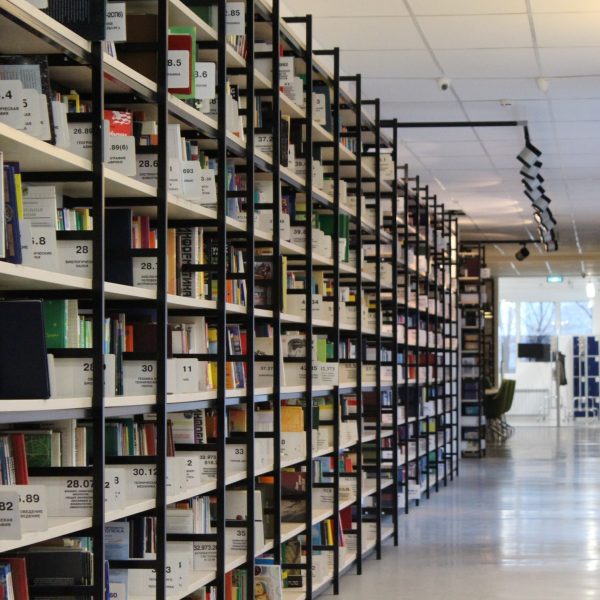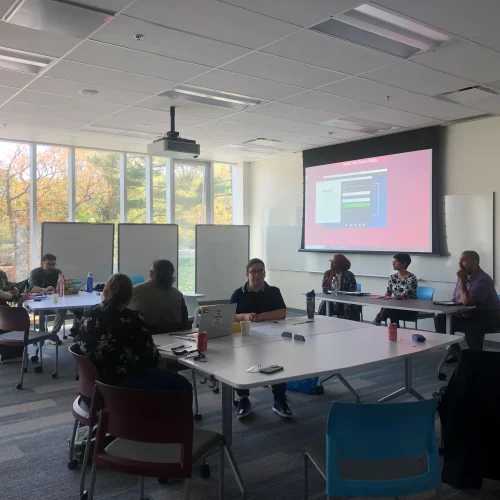
After nearly 50 years of obscurity, a large collection of rare manuscripts in the basement of the Thomas Fisher Rare Books Library has found new life as the Institute of Islamic Studies (IIS) and the University of Toronto Libraries (UTL) agreed upon and implemented a plan to catalogue this collection, thereby opening it up to the world of research. The collection consists of approximately 1,200 texts ranging from the 15th to 19th centuries and written in Arabic, Farsi, Turkish, and Ottoman Turkish. The fact that this collection is coming to light now represents both the expanding collaboration between the IIS and the UTL, as well as the UTL’s diversification as it has pursued growth in its institutional capacity.
The historical lack of language skills among the UTL librarians and archivists created a barrier to the processing and cataloguing of the collection. At the heart of the joint initiative between the IIS and UTL was the goal of both cataloguing this collection of Islamic texts to benefit a global research community and cultivate existing and new talent at the UTL with diversified language capabilities and understanding of a wide range of manuscript production practices. In this way, the David Esplin Arabic Manuscripts Collection carries the unique potential to reverberate throughout the U of T community and open doors of opportunity for new collections of all language and disciplines.
Since the start of the project in the Fall of 2019, considerable progress has been made. Just over 1,000 of the manuscripts have now been catalogued. Two new staff members have been hired to aid in this substantial undertaking. Lale Javanshir and Mahdi Ganjavi have both joined the team at UTL’s Metadata Services as Graduate Student Employees and are now bringing their significant skillsets to bear on this collection. They bring with them significant experience working with Middle Eastern languages, making the translation and cataloguing process easier and more efficient. Unavoidably, the ongoing COVID-19 pandemic has created a host of issues for the team working on this project. One would assume that progress has been halted to a near stop; however, after meeting with the team in December of 2020, I learned that this is thankfully not the case. Blair Kuntz, the Principal Cataloguer for Arabic and Middle Eastern Sources, informed me that, if anything, the pandemic has “worked as an impetus” for everyone involved. It has pushed the team to complete as much remote work as possible so as to be able to complete the process even more efficiently when they are allowed back in the Library in person. Javanshir echoed this statement, saying that the pandemic “hasn’t just been a gap in progress. We’ve been working.” For Javanshir specifically, while COVID-19 has interrupted her in-person training with Kuntz at Metadata Services, that has not been a hindrance to her development as she continues her training through remote modules. Javanshir has catalogued over 200 of the digitized manuscripts, which can now be found here. In addition to aiding the work to come after the pandemic, the progress made before lockdown has significantly helped the team in their advancement this last year. Prior to lockdown, in 2013, over 500 of the manuscripts had been digitized by the Internet Archive. This has allowed for much of the cataloguing work for the remaining uncatalogued manuscripts to be done from home. While this has been incredibly beneficial to the overall progress of the cataloguing project, certain key elements of these texts and their materiality require in-person study, such as bindings, marks of provenance, types of ink, and the type and age of the paper used. The COVID-19 pandemic has demonstrated how important both the written content (which is easily digitized) and the physical artifact are in cataloguing and developing collections like these.
Speaking of the content and materiality of these texts, after a year into this massive undertaking, we have learned more about what this collection actually contains. The initial breakdown broadly categorized the 1,200 manuscripts into: Islamic law, theology and Qur’anic commentaries; Islamic and Arab history; Arabic language, literature, and grammar; and works on Islamic sects and biographies of Muslim figures. As the team has worked through more and more of the manuscripts, they’ve uncovered a wealth of unexpected and exciting inclusions. Not only have they found numerous collections of Islamic poetry, the discovery of a Christian poetry collection is intriguing. Christian writings may sound unexpected, but their presence can actually tell us more about the overall collections’ origins. The U of T purchased these texts in 1973 from Suleiman’s Book Shop in Beirut, Lebanon. All of the texts are believed to have originated in and around the then-Ottoman territories of the Levant. As a region with a historically significant Arab Christian population, many of whom were educated in French and missionary schools, the Levant was a central arena in the nahda, or Arab renaissance. Many of the early nahda writers and intellectuals hailed from Christian communities and spoke to Christian audiences. The presence of Christian poetry in this collection is thus an exciting one as it gives a fuller image of the cultural and intellectual landscape of the late Ottoman Levant.
In addition to poetry collections, the cataloguing team have also discovered a number of texts on the Islamic occult. As Ganjavi pointed out, this unexpected find will no doubt offer invaluable research opportunities and insight for scholars interested in the growing field of the occult in Islam. There are also numerous illuminated texts, filled with ornate floral and geometric patterns and illustrations. Among the particularly unique discoveries brought about through this collection, Blair Kuntz mentioned a small text that he was shown by a Toronto resident from Afghanistan. Roughly the size of a palm, bound in a carpet-like material, and containing multiple languages within its pages, this query from a resident shows the promise of future additions to this already incredible collection and those like it. Other texts already within the Esplin collection also exhibit multiple languages, an indicator of the presence of multiple peoples and institutions in the region. The use of Ottoman Turkish, for instance, illustrates the presence and prevalence of the Ottoman Empire. Javanshir mentioned another unique entry: an astronomy text written in Arabic, but with dua’s (supplications and prayers) written in the margins in Turkish. Texts like these show the richness of research opportunities, with each document carrying invaluable information – textual and material – for multiple disciplines. As Javanshir noted, as this collection becomes available to the larger academic community, both within the U of T and globally, the research potential is vast.
May Chan, the Head of Metadata Services, emphasized the importance of developing this collection, and what it can mean for future collections in a variety of disciplines across the U of T community. As she mentioned in our conversation, the spirit of this joint initiative goes far beyond this specific collection and is fundamentally about developing staff resources and capabilities across the librarian and archivist community. With many collections arising from donations, and the historic lack of language skills, it has not always been easy to ensure that incoming collections are met with the proper skillsets. Chan made it clear that she is committed to “making sure we have the skillsets” to work through collections of any kind when they come along. With potential future collections, such as a large Kurdish one, the importance of language skills and diversity is paramount. “We really value linguistic ability,” Chan told me while discussing the impact and the potential that the Esplin collection carries. Kuntz echoed this, mentioning the possibility of the U of T becoming a major research hub for Kurdish language studies as well. This is because of a large and generous donation of Kurdish language materials from the former U of T professor, Dr. Amir Hassanpour, who passed away in 2017. Ensuring that our academic community is capable of handling, developing, and celebrating collections of any language and discipline is in many ways the heart of this current venture.
The David Esplin Arabic Manuscript collection has had a long history. Some of the texts themselves date back to the 15th century, and the U of T has housed these vital pieces of literature and material history for almost 50 years now. With this collection finally receiving the institutional attention it deserves, it can begin to yield its immense academic value to us at the U of T and also the global community of scholars. It also signals to academic as well as various religious, ethnic, and linguistic communities that Toronto continues to evolve as a vibrant cultural center where more and more people can see themselves represented in the work being done about their communities. This impressive collection will hopefully serve as a catalyst for academic, and particularly librarian and archivist, communities to expand their own research capabilities and opportunities. In doing so, our intellectual and cultural landscapes become that much richer.




